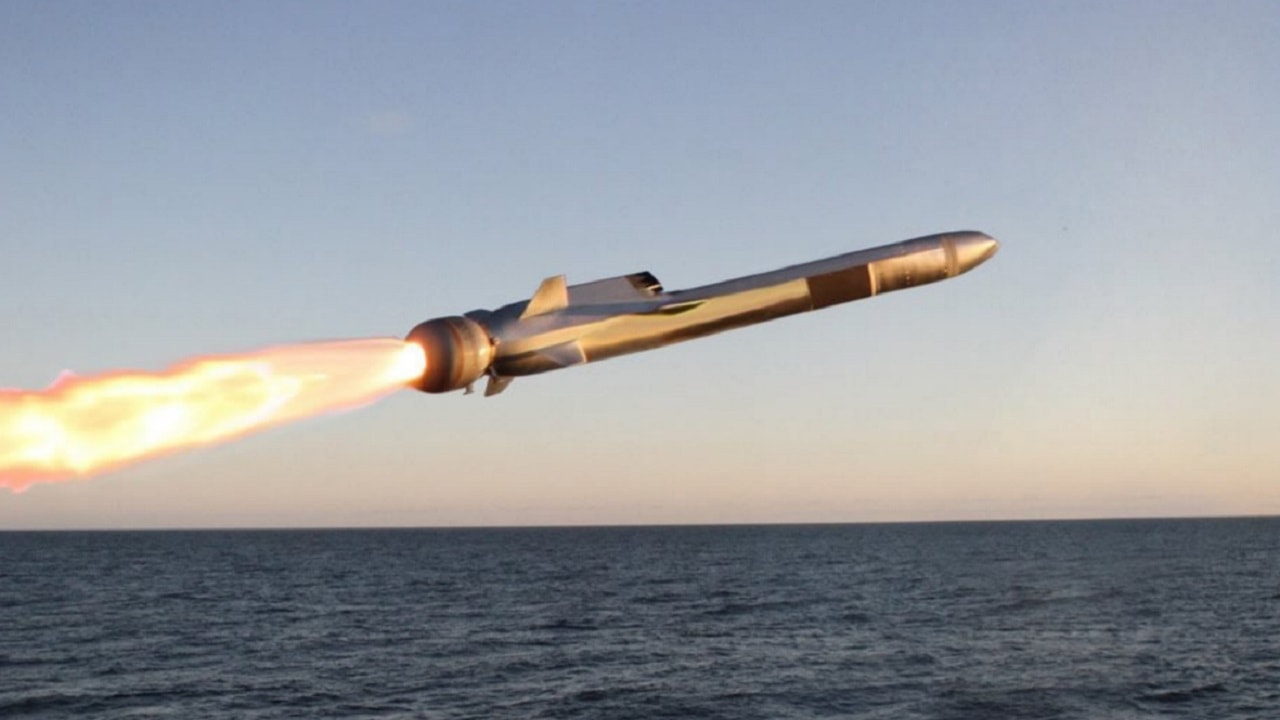Norwegian Naval Strike Missile Coming to Royal Navy: Royal Navy warships will soon be equipped with a more powerful surface-to-surface anti-ship missile. British Type 23 frigates and Type 45 destroyers will be outfitted with the Norwegian-made Naval Strike Missile (NSM). The NSM will replace the existing Harpoon surface-to-surface weapons platform, which is due to be retired by the end of next year.
The missiles, which are four meters long, can strike enemy ships at a distance of more than 100 nautical miles at subsonic speeds.
The NSM was developed as a collaboration between the Norwegian government and the aerospace division of Kongsberg, Norway’s largest defense contractor. It is a flexible system that can be launched from a variety of platforms against both sea and land targets.
The NSM has sea-skimming capabilities along with advanced terminal maneuvers, which allow it to evade enemy air defenses.
The Autonomous Target Recognition (ATR) of the seeker units further ensures that the correct target is detected, recognized, and hit, at sea or on land.
The missile was initially chosen by the Royal Norwegian Navy for its Fridtjof Nansen-class frigates and Skjold-class patrol boats.
“Kongsberg is very pleased to welcome the Royal Navy as a member of the NSM User Group,” Øyvind Kolset, executive vice president of Kongsberg Defence & Aerospace, told reporters last week. “We proudly support the strengthening of defense ties between our nations by integrating the NSM on the Royal Navy’s vessels.”
Norwegian Naval Strike Missile: Watch Out, Russia
The NSM could further bolster the Royal Navy’s firepower as Russia continues to pose a threat to NATO maritime security, suggested military analysts. UK defense firms Babcock and BAE Systems will install NSM on a total of 11 warships, with the first ship due to be operational by the end of next year.
“Fighting in the Black Sea as a result of the Ukraine war has brought the UK’s Naval firepower capability back into the focus as it waits for the Future Cruise and Anti-Ship Weapon (FCASW),” explained James Marques, associate aerospace, defense and security analyst at international analytics firm GlobalData.
“The Royal Navy’s search for an interim anti-surface weapon has been answered by Norwegian firm Kongsberg’s partnership with U.S. Raytheon in developing the NSM, a more advanced alternative to the aging Harpoon, which has already been sold to Poland, Spain, and the U.S.,” Marques said via an email to 19FortyFive.
The NSM is able to fly over and around landmasses, travel in sea skim mode, and even conduct random maneuvers in the terminal phase, which makes it harder to stop by enemy countermeasures.
The fifth-generation NSM is also able to navigate by GPS, inertial, and terrain reference systems. Though it was developed as an anti-ship missile, the NSM also can attack land targets.
“Good interoperability and a predicted fitting time of just 12 months makes the NSM a wise choice and demonstrates NATO’s ability to bolster its defenses as Russia continues to pose a threat to maritime security in Northern Europe and the Arctic despite its struggles with naval operations in the Black Sea,” added Marques.
GlobalData forecasts that the global market for anti-ship missiles (AShMs) and missile defense systems is expected to grow at a compound annual growth rate (CAGR) of three percent to $34 billion by 2032.
A Senior Editor for 19FortyFive, Peter Suciu is a Michigan-based writer. He has contributed to more than four dozen magazines, newspapers, and websites with over 3,000 published pieces over a twenty-year career in journalism. He regularly writes about military hardware, firearms history, cybersecurity, and international affairs. Peter is also a Contributing Writer for Forbes and Clearance Jobs. You can follow him on Twitter: @PeterSuciu.

